Find out what the garden and propagation teams have been up to this week.
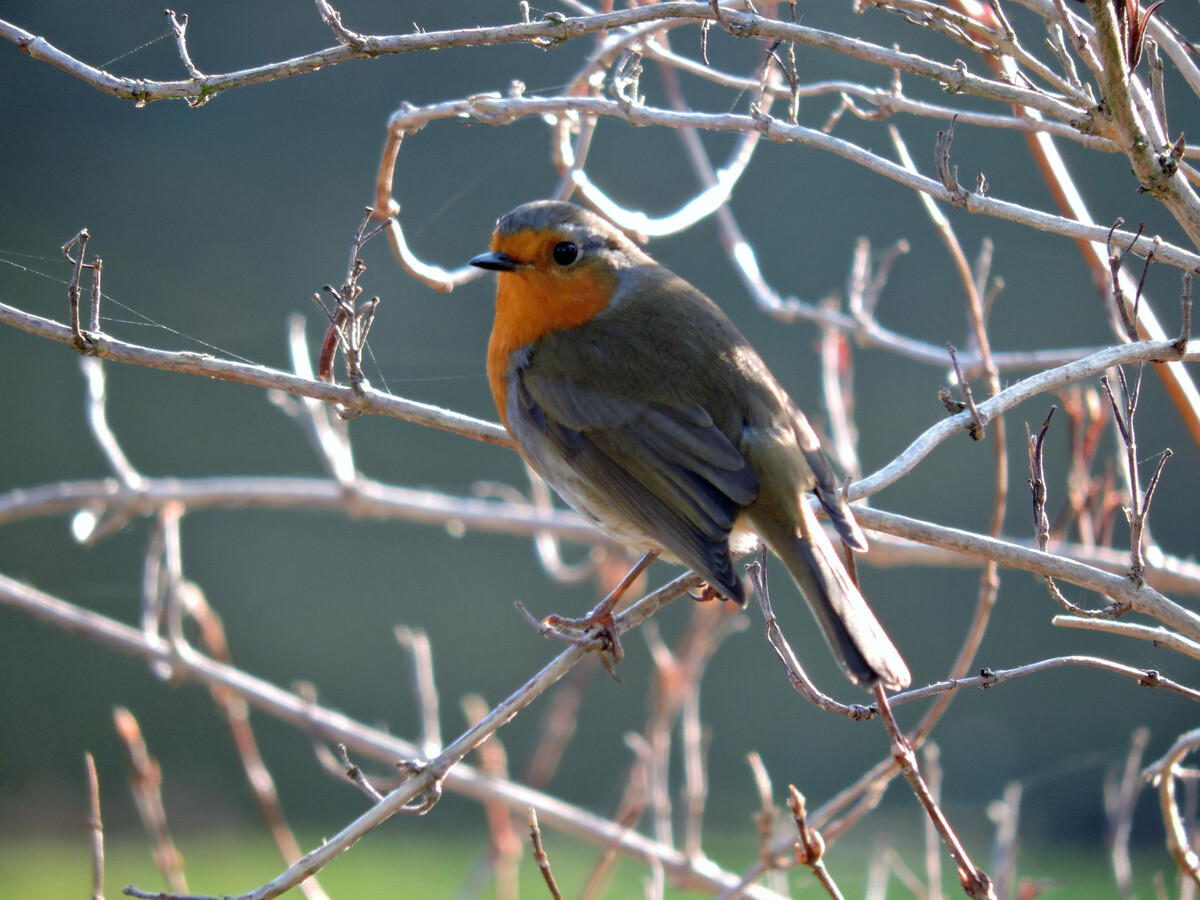
Wild Words from the Ground – February & March

Welcome to the second of our new series of blogs featuring the photos and sightings of wildlife in the garden (and our outreach sites like Chattowood) by our staff, whether in office, shop, tearoom, nursery or garden. The images are curated and commented upon by Dr Chris Gibson, our Wildlife Advocate.
While the photos are not always of the highest quality – our staff are always busy doing their main jobs! – they give a real feel of life in the garden. We will aim to produce monthly blogs for most of the year, but because winter sees fewer insects and many fewer people out in the garden to see the wildlife, this one covers the two-month period February–March 2025.
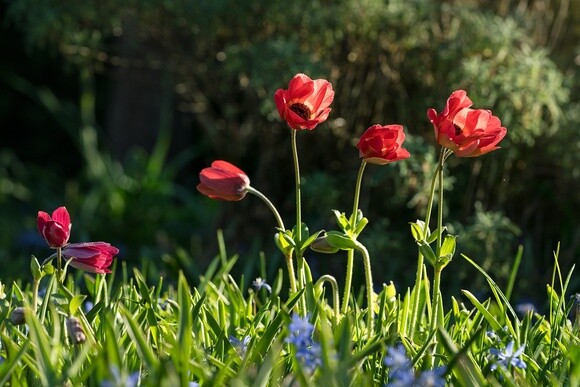
For most people, the most welcome and obvious insect signs of spring are the first emerging butterflies, gracing our gardens like flying flowers. At this stage, all are ones that have overwintered as adults, some five species in total, and while Red Admirals and Commas have been seen in March, the ones that really attracted attention were the Brimstones.
All Brimstones are yellowish, but a fresh male has an unrivalled sulphur brilliance. Both Emily and Scott reported seeing them, the first report coming on 5th March, a date that saw many other records from the general area, something of a coordinated emergence in the warm, sunny weather. And just as well: there is little point in emerging to find a mate when there are no others on the wing.
Gardens play a special role for Brimstones, as their natural larval foodplants Buckthorn and Alder-buckthorn are often very thinly scattered in our hedges and woods, whereas in gardens there may be more plants often deliberately planted to encourage the true ‘butter - fly’.
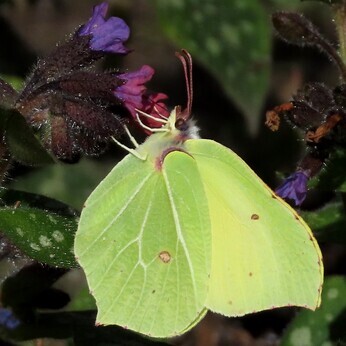
Related to butterflies, and sharing the nominative feature of Lepidoptera (‘scale-wings’), moths are more easily overlooked as many are nocturnal and they often use their coloured wing-scales to provide camouflage against natural resting backgrounds. One such was the Oak Nycteoline photographed by Cathy: against bark it may well have been overlooked, but easily seen against dark clothing. This is a very small ‘macromoth’, smaller than many of the ‘micromoths’ and so could be overlooked on size alone; so far as I am aware it is the first time it has actually been identified in the garden, although of course its larval foodplant, Oak leaves, are all around.
Not all moths are as selective in their foodplant choices though, and a typical non-selective one is one of our most abundant macromoths, Large Yellow Underwing. They feed upon a very wide range of herbaceous plants, but leave their food behind when ready to pupate, buried in soil. This one that Scott snapped was probably doing just that, and after the magic of metamorphosis, it will come out as an adult in a couple of months.
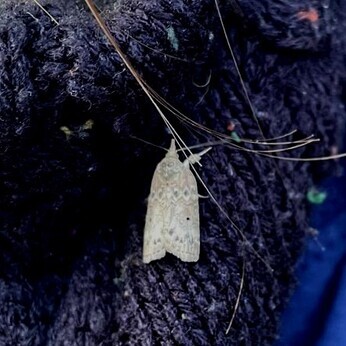
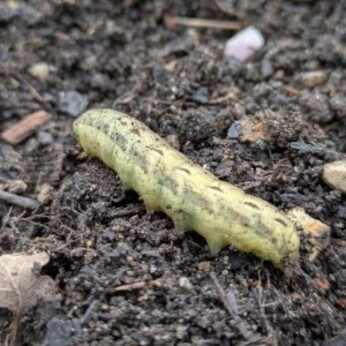
Another of the valued signposts towards summer is the emergence of ladybirds. Always the most numerous is Seven-spot Ladybird, as photographed by Rob; other species include Malin’s 22-spot Ladybird. Whereas the former is famously a voracious aphid-hunter, the latter is vegetarian, feeding on mildew from the surface of leaves: both forms therefore have an important part to play in garden ecology.
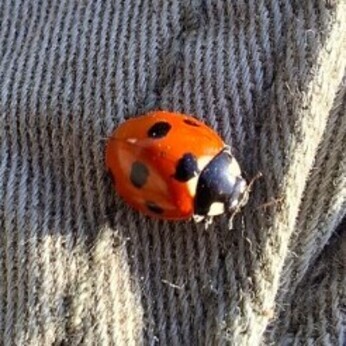
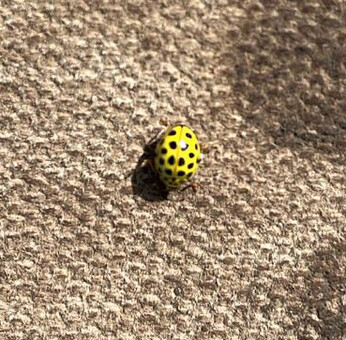
Staying with the beetles, many are of course simply black, albeit often with a beautiful metallic sheen, or impressive just because of their size. Ground-beetles are also an important predatory group, feeding especially on slower-moving caterpillars and slugs helping to keep our garden in balance. This one, photographed by Malin, is the aptly named Violet Ground-beetle – the thorax and edges of the wing cases show an often vivid purplish reflection. Rob, on the other hand, found a beetle larva, a large grub that was inside a rotten log he was moving. Thinking it may have been a (protected) Stag Beetle, he (with Hollie and Ben) found a spot down by the damp stock beds, dug a shallow hole, half placed the wood in and covered with loose soil and leaf litter. Exactly the right thing to do! Closer examination of the image suggests it may actually have been a Lesser Stag Beetle, still interesting but much less rare: whatever, it shows the steps our wonderful gardeners are prepared to take to live up to our strapline ‘the home of ecological and sustainable plants and gardening’. But not all beetle larvae are readily identifiable, even to group: Malin found and Cathy photographed what can only be called ‘a beetle sp.’
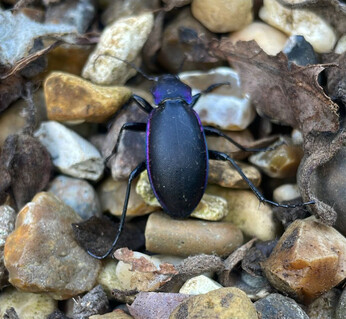
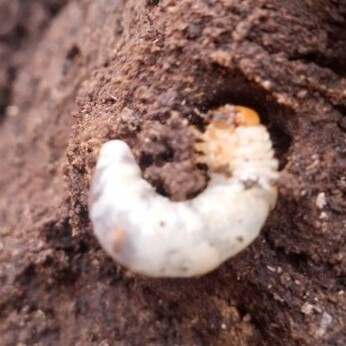
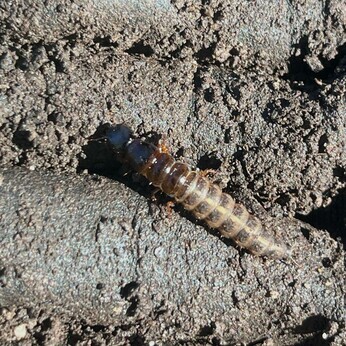
And then of course there are the bees, creating the buzz we associate with warmer weather. Rob’s photos of Honeybees and bumblebees, one species and perhaps ten, respectively, in the garden, show the value of familiar garden plants such as Crocus to bees that have recently come out from winter torpor.
Bees are of course very important pollinators of our garden plants, crops and wildflowers alike: we depend on them. But there are other pollinators on the block, including wasps such as this Hornet, snapped by Nicola. Wasps have the added ecological value that they feed live prey to their larvae, and their predation helps keep outbreaks of what might be considered ‘pests’ under some control. A queen like this Hornet will be responsible for potentially hundreds of offspring over the coming months, gentle giants that strike fear into the hearts of some but who simply want to be left alone to do their thing!
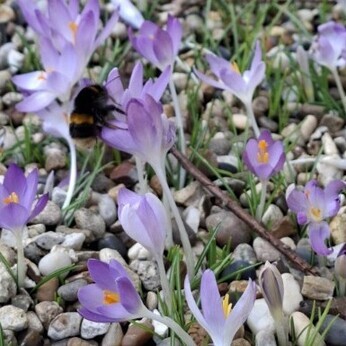
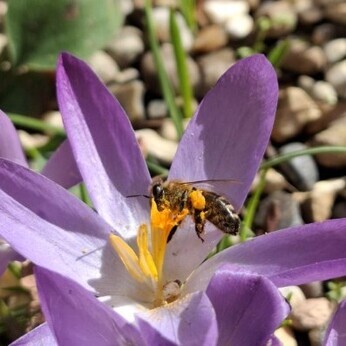
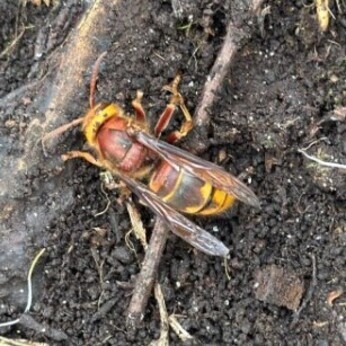
Social bees and wasps like the above are however the exception. Most are solitary, in that they have their own individual nests, although these are often aggregated together in suitable habitat patches. Scott took a lovely photo of an adult that had been darting around the Scree Garden. There are many similar species, but this is almost certainly Andrena bicolor, Gwynne's Mining-bee.
He also sent a picture of the bee hotel, with many of the holes still occupied. His question was when should we expect the bees to hatch, and a new generation start to be laid. As with all the simple questions though, there is no simple answer. There may be ten or more different species in the one hotel, and all have different flight periods that coincide with the typical flowering period of their favoured forage sources. But the early species could come out any time now … assuming the larvae have not died over winter due to bacterial or fungal attack. And that they have not been parasitised, in which case it might not be bees but parasitic wasps that emerge!
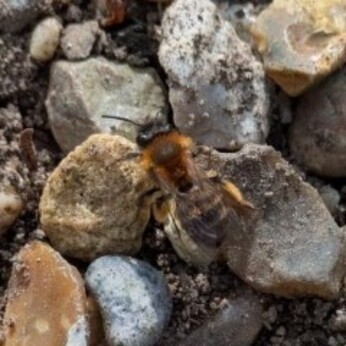
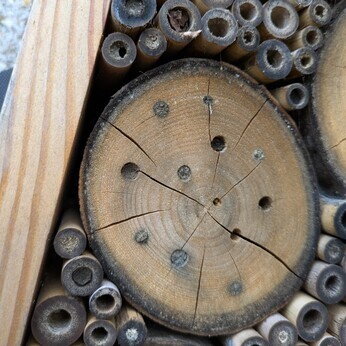
Related to bees and wasps are the ants, which are also warming up and becoming more active, and therefore more obvious. Mel took this rather abstract photo of one which shows a pale band across its abdomen, probably a Common Black Ant. David in the Meanwhile Garden also noticed lots of ants working in the sun, around the as-yet-leafless spears of Colt’s-foot starting to come into flower.
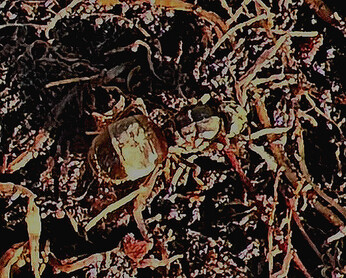
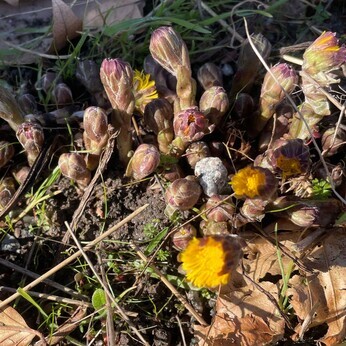
Given the suitability of habitat in our garden, lots of water bodies with well-vegetated surrounds, it is perhaps surprising we don’t have many records of newts. They are occasionally found under logs and among dense, shady vegetation, and as Nicola’s photo shows sometimes netted from the water as a part of childrens’ activities. Always exciting to see (and so the blurred image can be forgiven!), this appears to be a Smooth Newt. Indeed all our records have been of this, the commonest British species, although I would have thought Great Crested Newt would be a good contender to be found if the necessary survey effort was undertaken.
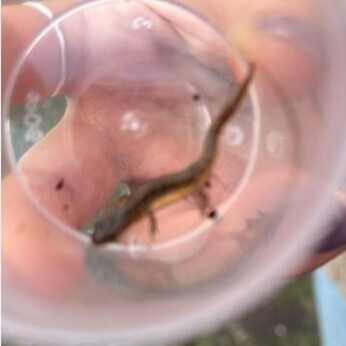
As in any garden there is also a whole lot of biodiversity present which goes completely under the radar: spiders and other ‘creepy crawlies’ (in the broadest context) always tend to be overlooked.
Rob photographed the Furrow Spider Lariniodes cornutus. Although common enough across Essex, I have not seen it in the gardens before, so it’s another new one for our developing list! Found by Malin, and snapped by Scott, the centipede is probably Geophilus flavus. Centipedes are predatory, hunting other litter-dwelling invertebrates, and can be distinguished from millipedes by having just one pair of legs per body segment. Millipedes have two, and are mainly detritivores, good old munchers of leaf-litter and other dead organic matter, helping kick-start the process of decay (= nutrient recycling): the one here, from Scott, is one of the flat-backed millipedes, probably a Polydesmus. And millipedes can be found anywhere, as Matt found with one exploring the tearoom, but this is one of the cylindrical species, probably a Tachypodiulus sp.
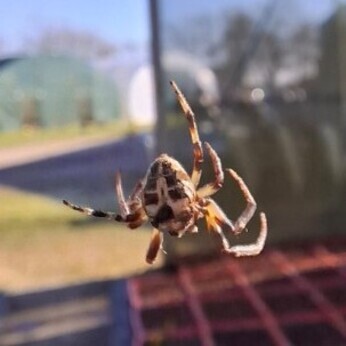
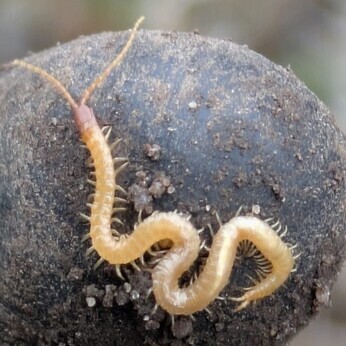
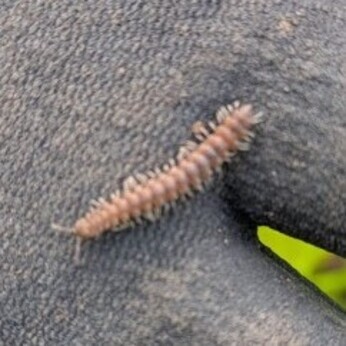
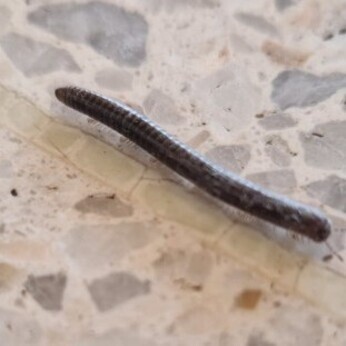
Malin photographed some worms unearthed while digging. They are probably the Common Earthworm Lumbricus terrestris, fantastic soil aerators and a great food source for thrushes and Robins, one of which was taking a great deal of interest in the gardening activities. Worms, centipedes, millipedes and spiders may lack some of the public appeal of butterflies and ladybirds but they certainly make up for it in the services they provide to us, the gardeners.
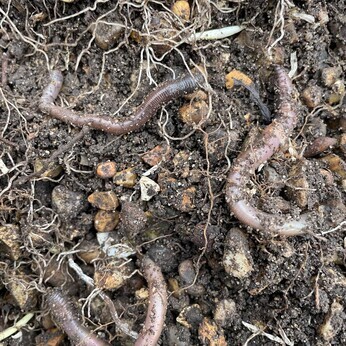
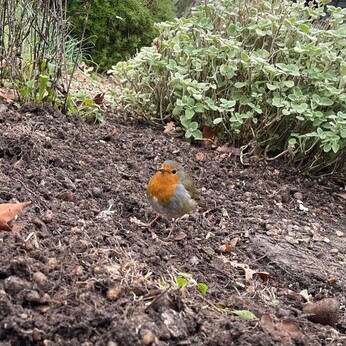
So the end of March is here, we have passed the spring equinox, and the garden is starting to show in all its glory. What better time to come (open Tuesday–Saturday, 10 ’til 5) to see not only spring unfolding on a daily basis but also the wonderful array of wildlife with which we share the garden? And please come back to see what is happening in the wild side of the garden over the coming year!
For a different perspective on the last two months, you can see Chris Gibson’s personal blogs at the links below:
The Wild Side of Beth Chatto Gardens: exquisite equinox! | Chris Gibson Wildlife
The Wild Side of Beth Chatto Gardens: Spring starts here! | Chris Gibson Wildlife
The Wild Side of Beth Chatto Gardens: Spring arrives … at last! | Chris Gibson Wildlife

I have a large pesticide free country garden with lots of wildlife, many of which I'm unaware of.
I love the fact it is a gift from you to us and as an avid gardener and naturalist but one who can no longer travel .. stroke .. it is very precious and exciting
Thankyou